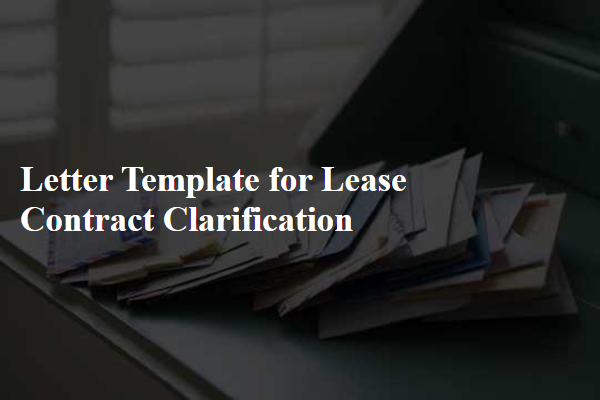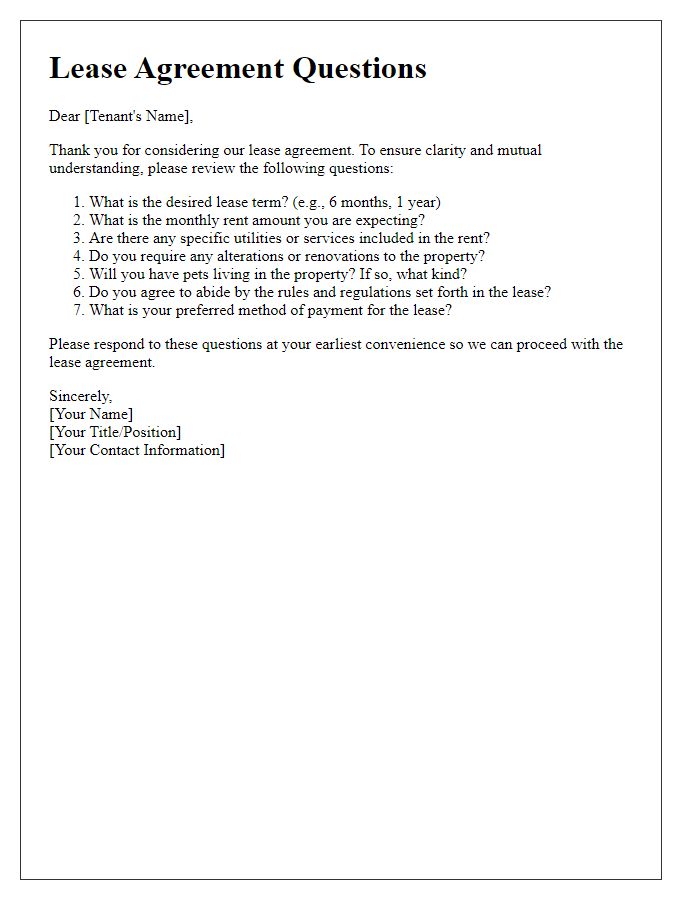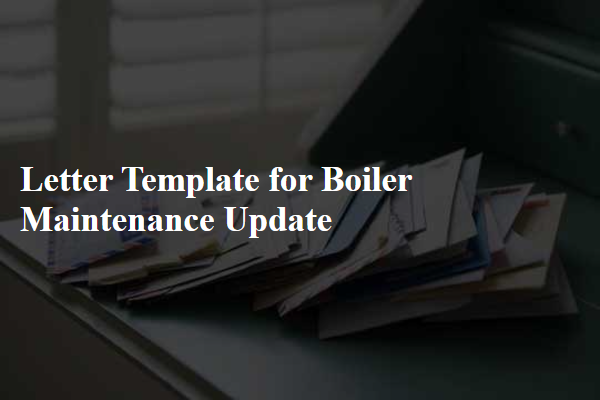Are you feeling a bit overwhelmed by the intricate details in your lease contract? You're not aloneâmany people find themselves puzzled by legal jargon and complicated terms. But fear not; understanding your lease is crucial for a smooth rental experience. Dive into our comprehensive article to clarify those confusing sections and empower yourself as a tenant!

Date and Recipient Information
Date formats can vary by jurisdiction, often shown as day-month-year or month-day-year, depending on local preferences. Precise recipient information is crucial in lease agreements to avoid future disputes. Include full legal names (first, middle, last) and addresses of all parties involved to ensure proper identification. Missing or incorrect details can render a contract unenforceable. Proper formatting of titles (e.g., Mr., Mrs., or Ms.) may also reflect level of professionalism and respect in the agreement's presentation.
Subject Line with Contract Reference
The lease contract clarification process requires precise communication between landlords and tenants regarding the specifics of property rentals. Ensuring clear understanding helps avoid potential disputes and misunderstandings. Lease agreements often involve critical details, such as payment amounts (including monthly rent, security deposits, and due dates), lease term (duration of the agreement, typically one year), maintenance responsibilities (who is responsible for repairs), and termination clauses (conditions under which either party can end the lease). Providing a subject line that references the contract number assists in tracking and organizing clear communication. This ensures both parties refer to the same document, facilitating a smoother clarification process.
Clear Identification of Points of Clarification
A lease contract often contains numerous points that require clarification to ensure both parties understand their obligations and rights. Key aspects often needing clarification include the rent amount, due date, lease duration, security deposit expectations, maintenance responsibilities, and penalties for late payment or breach of contract. Specific terms related to property use, such as subleasing policies or allowed alterations to the premises, also warrant detailed explanation. Additionally, understanding the process for renewing or terminating the lease, including any notice requirements and conditions under which the lease can be terminated early, is crucial for both landlords and tenants. Clear communication of these elements helps prevent disputes and fosters a harmonious rental relationship.
Specific Questions and Requests for Details
In a lease contract, specific questions and requests for details can clarify important aspects for both landlords and tenants. Understanding lease duration is essential; some leases are month-to-month, while others may span 12 months or longer. Rent payment details are critical, including due dates, acceptable payment methods, and any late fees applicable; these can vary widely between different properties and landlords. Maintenance responsibilities should be clearly defined; tenants need to know who handles repairs and upkeep for appliances, plumbing, and landscaping. Additionally, pet policies often vary, with some properties allowing pets under certain conditions, while others impose restrictions or require additional fees. Security deposit terms must also be clarified, including the amount, conditions for return, and any deductions allowable for damages. Amenities provided by the property, such as gym access, parking availability, or community features, should be enumerated in the agreement to prevent misunderstandings.
Closing with Contact Information and Follow-Up Instructions
For lease contract clarification, address all essential details comprehensively. Include contact information for both parties, emphasizing names, addresses, phone numbers, and email addresses. Specify follow-up instructions clearly; outline how parties can reach you regarding questions or issues. Encourage prompt communication, such as asking for responses within five business days. Clarify best times for contact, ensuring accessible communication methods. Highlight willingness to assist further, fostering positive interaction and ensuring understanding of lease agreement provisions.













Comments